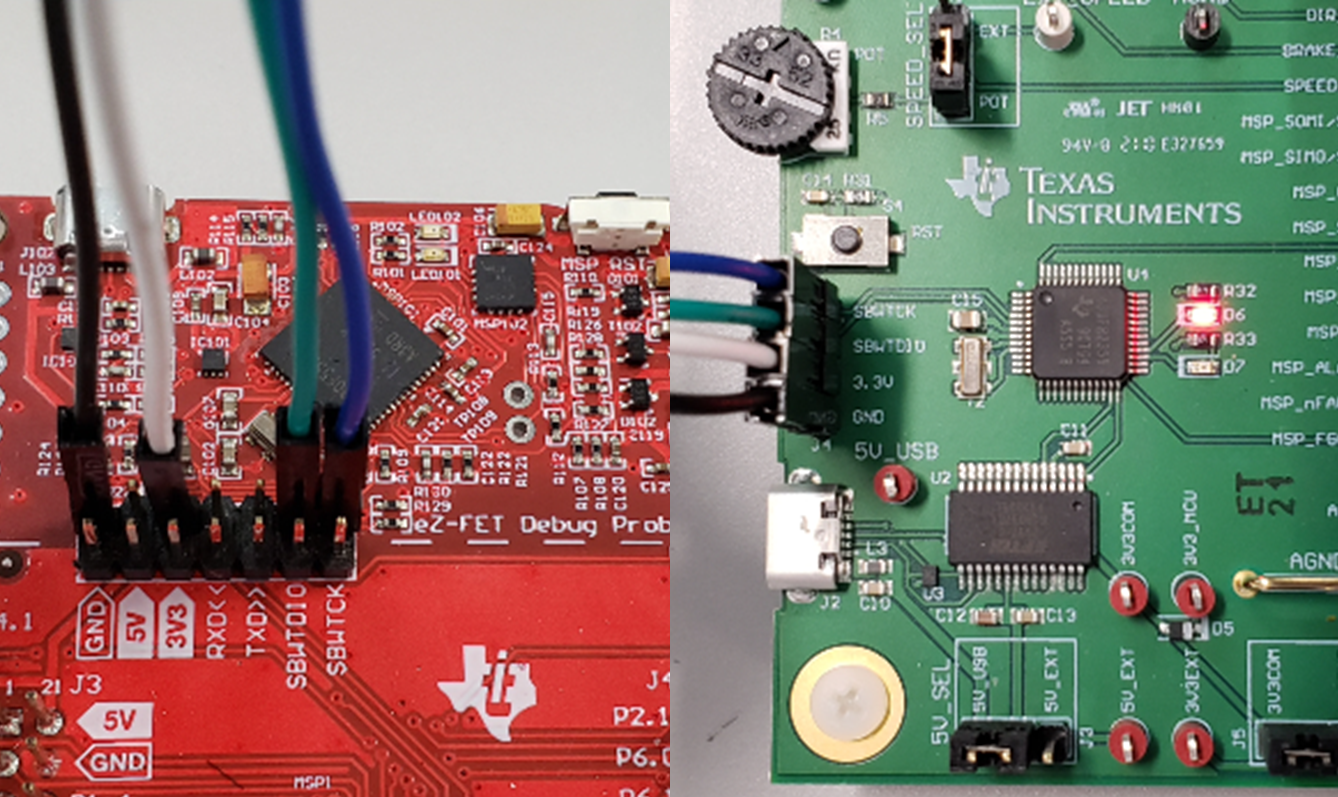SLLU384 July 2024
3.2.2 Using the eZ-FET to Program the MSP430FR2355
The MSP430FR2355 on the MCF8315EVM comes pre-programmed with the firmware necessary for communicating with the Motor Studio GUI and the MCF8315. To reprogram or flash custom code on the MSP430FR2355, you will need an external MSP430 LaunchPad™that includes the eZ-FET Debug Probe. In this example, we use the MSP-EXP430FR2355 LaunchPad Development Kit to provide the debug probe.
The eZ-FET Debug Probe on the MSP430FR2355 LaunchPad uses a SPI-by-Wire JTAG interface to program the MSP430FR2355 MCU on the MCF8315PWPEVM. Consult the MSP430 LaunchPad Development Kits for MSP430 LaunchPads that include an onboard eZ-FET Debug Probe.
- Remove the GND, 3V3, SBWTDIO, and SBWTCK jumpers from the MSP430 LaunchPad.
- Connect the top pins on the eZ-FET side of the LaunchPad of the GND, 3V3, SBWTCK, and SBWTDIO signals to their respective pins on J4 of the MCF8315PWPEVM as shown in Table 4-1 and Figure 4-3.
- Connect a micro-USB cable to the MSP430 LaunchPad and the PC.
- Click on the Build Project icon or CTRL+B to ensure the project builds successfully. Accept any updates if needed from the Console.
- Click on Debug Project to set up a debug session and press the Play button to run the code.
- Stop the debug session, close Code Composer Studio, disconnect the SPI-by-Wire jumpers and unplug the micro-USB cable from the MSP430 LaunchPad.
MSP430 LaunchPad™ (eZ-FET Debug Probe Side) (J101) | MCF8315PWPEVM 4-pin SPI-by-Wire Header (J4) |
|---|---|
GND | GND |
3V3 | 3.3V |
SBWTDIO | SBWTDIO |
SBWTCK | SBWTCK |
 Figure 3-3 MSP430 LaunchPad™ eZ-FET Probe Connected to MCF8315PWPEVM
Figure 3-3 MSP430 LaunchPad™ eZ-FET Probe Connected to MCF8315PWPEVM